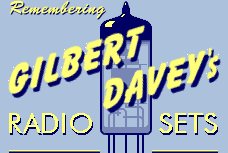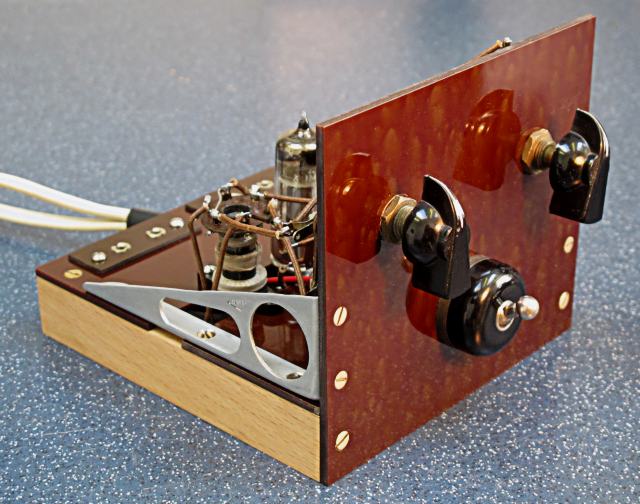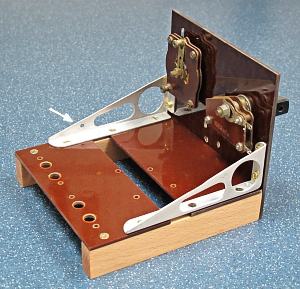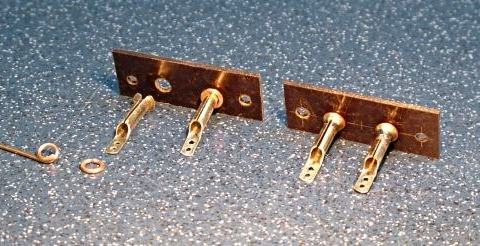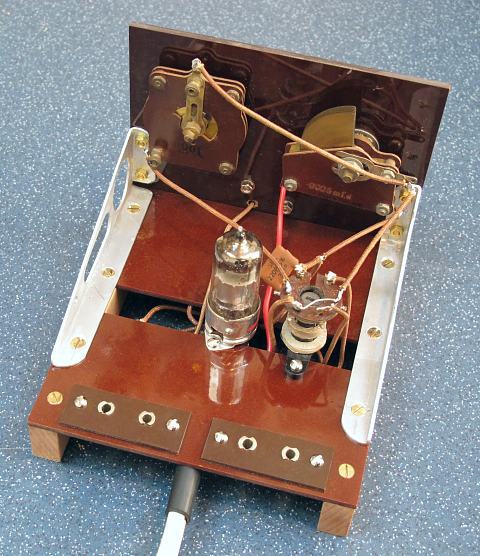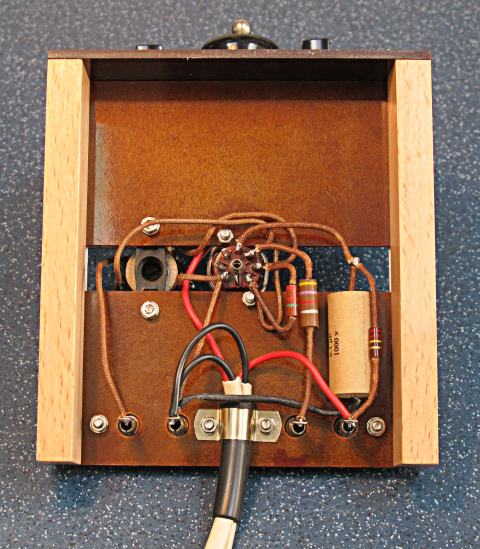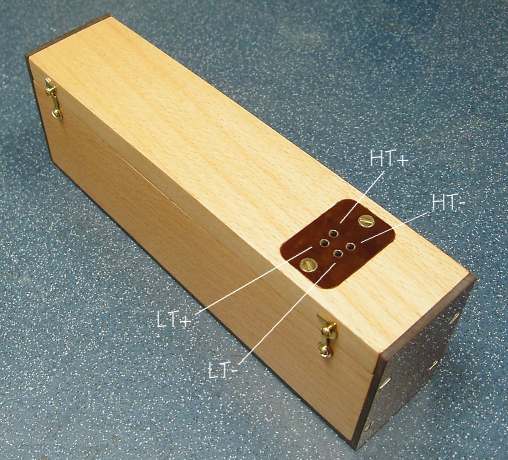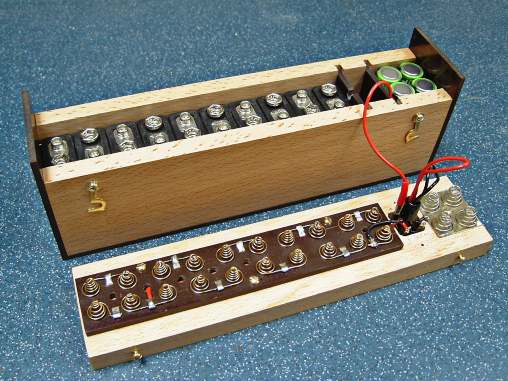|
|
Home-made wander socket strips.
|
|
|
Wander sockets
These once-common items seem hard to find now. The ones I made for my
"conjectural" set were too long (2" as compared with a genuine socket strip measured
at 1 3/4"), so I have re-made them. The strips were made from 1/16" Paxolin
(back of an old consumer unit), and are each 1 3/4" x 11/16". The fixing and
socket holes are at 1 1/4" centres and 1/2" centres respectively. This row of
four holes is displaced 1/16" from the centreline of the strip as is my genuine
example (to allow for printed legends).
The receptacles themselves are of 28swg sheet brass, rolled round a 1/8" drill.
These were each peened over at one end to form a flange, flattened at the
other end to form a solder tag, and this tag drilled with two small (1.5mm diameter)
holes. They were knocked into very slightly undersize holes in the Paxolin
strips, then secured with rings of copper wire (from house-wiring cable) soldered
in position.
Each socket strip is fixed with two 6BA bolts and nuts (as I think was the case with my
original 1957 set), rather than fixing the outer ends with wood screws through to
the runners as the leaflet shows. The 1/4" extra width to my chassis
allowed room for the saddle and sleeve supporting the battery leads (see below).
Other components
The following components kept from the 1957 set are again used in my new rebuild:
* aluminium side brackets (not in published design);
* LT switch (not in published design);
* two variable capacitors;
* B7G valveholder;
* Teletron D/R coil.
The Teletron coil is now very scarce, and I am fortunate in having kept mine.
(If you want to build the Studio ‘E’ set but cannot get hold of this
coil, you may like to consider making either the homebrew medium-wave-only coil that
I tried out on my “conjectural” set, or the even bigger Davey long- and medium-wave coil.
Details for both of these can be found on the
CONSTRUCTION RESOURCES
page. If you do use either of these large home-made coils in place of the Teletron,
bear in mind that it will be necessary to offset the valveholder well towards the
right-hand side of the chassis as seen from the front, and in the case of the dual-band
coil, this will project somewhat above the front panel and also requires a wavechange switch.)
The control knobs and battery plug are also probably from the 1957 set. I still
have the original DAF96 valve, but I suspect this is a little low on emission, and I
get better results with a (possibly newer) DAF91.
The three resistors and the grid capacitor (C3, 220pF) are “new old stock”, bought on
ebay. The only modern component is the bypass capacitor (C4, 0.1µF).
This came with a garish glossy yellow cover, so I took this off and substituted a
"vintage-look" sleeve of manilla paper.
|
